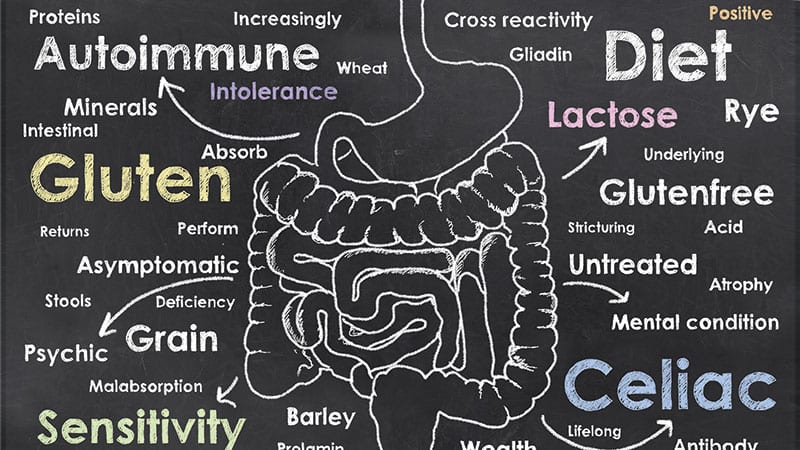Think about nutrition when going gluten-free
By Danielle O’Keefe, guest contributor
This article was originally published in March 2021

Grains have fallen out of favor with many consumers, particularly those containing gluten. The controversial protein continues to both delight and perplex us, lending texture and structure to baked goods but causing an array of potentially calamitous health problems to those who cannot tolerate it. Whatever someone’s reason for avoiding gluten, there are key nutrition implications to consider when restricting its consumption (as there are when restricting any group of foods).
For those with celiac disease, an autoimmune disease, eating gluten can lead to damage in the small intestine. (The nonprofit Celiac Foundation estimates it affects about 1% of the population worldwide.) For a larger percentage of people who suffer from non-celiac gluten sensitivity, even small amounts of gluten can still cause distressing symptoms, including gastrointestinal pain. This requires sufferers to eliminate gluten-containing grains from their diets and to meticulously monitor food and supplement labels for hidden sources of gluten, as well as avoiding gluten contamination in food preparation. This exacts a social toll; it can be hard to ensure foods prepared at restaurants or social gatherings are free from contamination.
Others follow gluten-free diets because they find it lessens unpleasant physical or mental symptoms even in the absence of a diagnosable gluten-related disorder. Regardless of medical necessity, following a gluten-free diet takes effort and requires some forethought to maintain good health.
Convenience and health sometimes collide when trying to meet these goals. Food manufacturers and grocers have met the escalating popularity of gluten-free diets with a concurrent surge of gluten-free packaged foods. While these products may provide familiar flavors to those who suffer from gluten intolerance, many specialty gluten-free products are highly processed and subsequently contain less fiber and nutrients than their whole food counterparts. GF boxed macaroni and cheese is delicious, for example, but—just as in the glutinous world of wheat-containing product—it is less nutrient-dense than alternates like a cheesy chicken, brown rice and broccoli casserole. For those with celiac disease, for whom gluten damages the small intestines and impairs the absorption of nutrients, prioritizing nutrient-dense whole foods over processed commercial products is essential.
In a typical diet, gluten-containing grains are generally desirable because they offer beneficial nutrients, providing valuable vitamins, minerals and fiber. Luckily for those who cannot tolerate gluten, those grains and their nutrients are readily replaceable. Although gluten is a protein found in several nutritious whole grains, including wheat, barley, rye and farro, other nutritious whole grains are free of gluten. Try quinoa, rice, millet or gluten-free oats for alternates.
The exception to keep in mind when making gluten-free grains part of a healthy diet is that many refined wheat products like flours, breads, pastas and cereals are enriched with B vitamins. (Grains are considered refined, as opposed to whole, when they’ve had parts such as the bran, germ or endosperm removed.) Because the refining process removes half to two thirds of the grains’ nutrients, governments require food manufacturers to enrich these refined products by adding some of the missing nutrients back in. Enriching wheat flour with the B vitamin folate helps prevent devastating birth defects, for example. Gluten-free products such as corn tortillas, GF flour blends and rice pasta aren’t similarly fortified, making it crucial for women considering a GF diet who could become pregnant to ask their doctor if they need to supplement folate.
Inexpensive and nutritious GF grains can easily fit into typical meal planning. GF oats are a familiar breakfast choice, while quinoa and rice both easily fulfill lunch and dinner needs. Consider quinoa and black bean bowls for lunch or rice as a side for dinner, for example. For GF recipes of common favorite foods, visit this link.
While it’s exciting to see the ever-widening assortment of gluten-free choices on grocery shelves, ranging from frozen pizza to rice ramen, ensure your efforts are conducive to good health by emphasizing a variety of whole grains and naturally GF fruits, vegetables, nuts, seeds and legumes in your meals. Whether you’re contending with a diagnosable gluten intolerance or not, eliminating gluten can be done healthfully.
Danielle O’Keefe is a student in the Master of Science in Nutrition and Master of Arts in Counseling Psychology Dual Degree program at Bastyr University.
A pioneer in natural medicine, Bastyr University is a nonprofit, private university that is at the forefront of developing leaders in natural health arts and sciences for the 21st century. Bastyr offers graduate and undergraduate degrees in science-based natural medicine that integrates mind, body, spirit and nature. The University is also a leader in conducting cutting-edge research in complementary and alternative medicine and in offering affordable natural healthcare services in its local communities.
